The computer revolution transformed civilization more profoundly in six decades than most technologies achieve in centuries. From room-sized machines processing basic calculations to pocket-sized supercomputers connecting billions globally, computing achievements represent some of humanity’s most remarkable innovations. Yet the pioneers, inventors, programmers, and visionaries who built this digital world often receive less recognition than athletes or entertainers despite their transformative contributions to modern life.
This comprehensive guide explores computer halls of fame including their history and purpose, the types of achievements they recognize, implementation strategies for educational institutions and organizations, how digital recognition platforms enhance technology celebration, and best practices for creating recognition programs that inspire students, honor innovators, and preserve the remarkable story of computing’s development from theoretical concept to civilization-defining technology.
Understanding Computer Halls of Fame: Purpose and Significance
Computer halls of fame serve distinct purposes beyond general recognition programs by celebrating achievements in a field where progress occurs rapidly, contributions span theoretical research through practical implementation, and public understanding often lags behind the significance of innovations that fundamentally reshape daily life.
The Unique Nature of Computing Achievement Recognition
Recognizing computer science and technology achievements presents challenges and opportunities that distinguish these halls of fame from recognition programs in other fields.
Rapid Pace of Innovation and Obsolescence
Computing advances at speeds that make yesterday’s breakthroughs seem quaint within years or even months. Technologies that appeared revolutionary—mainframe computers, floppy disks, dial-up modems, early mobile phones—quickly become historical curiosities as innovation accelerates. This rapid evolution makes preserving computing history particularly important, as achievements risk being forgotten amid constant forward motion.
Computer halls of fame create permanent records of innovations at their moment of significance, documenting why particular achievements mattered even when subsequent advances render original technologies obsolete. This historical preservation helps current students and professionals understand how computing evolved through accumulated contributions rather than appearing fully formed.

Bridging Technical Excellence and Public Understanding
Computing achievements often prove difficult for non-technical audiences to appreciate fully. The significance of breakthrough algorithms, elegant code architectures, or foundational theoretical proofs may not be immediately obvious to general audiences who easily grasp athletic records or artistic achievements. Yet these technical accomplishments frequently have far greater lasting impact on human welfare than more publicly celebrated achievements in other domains.
Effective computer halls of fame translate technical excellence into narratives that broader audiences can appreciate, explaining not just what innovators accomplished but why those achievements mattered and how they enabled subsequent technologies that people use daily. This educational function proves crucial for building public appreciation for computing contributions.
Team Contributions vs. Individual Recognition
Unlike fields where individual achievement dominates—a single artist creates a painting, one athlete sets a record—computing breakthroughs typically emerge from collaborative teams. Operating systems, programming languages, network protocols, and software applications represent collective efforts involving dozens or hundreds of contributors over years or decades.
Computer halls of fame navigate the challenge of honoring both visionary leaders who guided projects and technical teams whose detailed work made visions reality. Some recognition programs emphasize individual pioneers, while others celebrate complete teams or acknowledge that significant innovations emerged from collaborative environments where attributing credit to specific individuals proves difficult or misleading.
Types of Computer Halls of Fame
Computer recognition programs take various forms depending on organizational context and recognition objectives.
Academic Computer Science Halls of Fame
Universities with distinguished computer science programs establish halls of fame recognizing alumni, faculty, and students who made exceptional contributions to computing fields. These academic recognition programs celebrate achievements including groundbreaking research published in leading journals, development of widely adopted programming languages or methodologies, creation of influential software or systems, entrepreneurial success founding significant technology companies, and distinguished careers advancing computing practice or education.
Academic computer halls of fame serve recruitment purposes by demonstrating program prestige, engage alumni through recognition that strengthens institutional connections, and inspire current students by showing achievable career paths from classroom to industry leadership or research distinction.
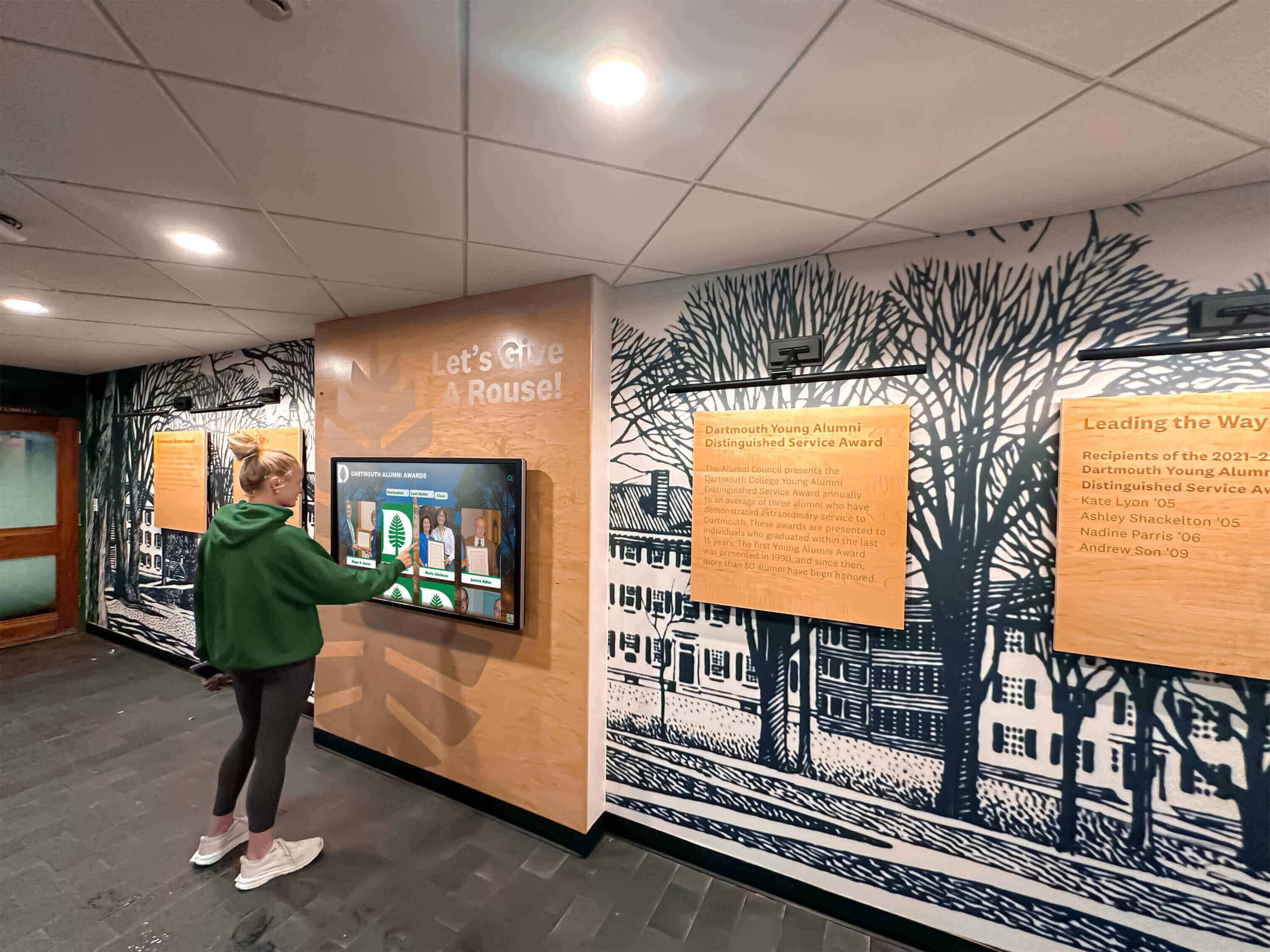
Educational institutions can showcase these achievements effectively through interactive alumni recognition displays that allow students and visitors to explore distinguished graduates’ careers and contributions comprehensively.
Technology Museum Recognition Programs
Museums dedicated to computing history—such as the Computer History Museum in California—maintain comprehensive halls of fame honoring individuals across the entire span of computing development from theoretical pioneers through contemporary innovators. These museum-based programs emphasize historical preservation and education, creating authoritative records of computing evolution while making that history accessible to public audiences.
Museum halls of fame typically recognize extremely significant contributions that shaped computing broadly rather than narrower technical achievements. Inductees often include inventors of foundational technologies, entrepreneurs who built influential companies, researchers who made breakthrough discoveries, and visionaries whose ideas guided computing’s development even when they didn’t create specific technologies themselves.
Professional Association Recognition
Computing professional organizations like the Association for Computing Machinery (ACM) and Institute of Electrical and Electronics Engineers (IEEE) maintain recognition programs honoring members who advanced their respective fields through research, practice, education, or service. These professional halls of fame focus on peer recognition within technical communities rather than public celebration.
Selection for professional organization halls of fame carries particular weight within computing fields, as it represents acknowledgment from fellow experts who understand the technical significance of contributions that general audiences might not fully appreciate.
Corporate and Industry Innovation Recognition
Technology companies establish internal halls of fame recognizing employees whose innovations, patents, products, or leadership significantly impacted company success. These corporate recognition programs serve multiple purposes including motivating continued innovation through visible recognition, preserving institutional knowledge about how important products or technologies developed, building company culture around innovation and excellence, and creating retention incentives for top technical talent.
Some industry sectors—semiconductors, software development, telecommunications—maintain sector-specific halls of fame recognizing individuals who advanced particular technology domains regardless of specific employer affiliations.
Historical Development of Computing and Key Achievement Categories
Understanding computing history provides essential context for recognition programs celebrating contributions across different eras and domains within this broad field.
Foundational Computing Pioneers (1800s-1940s)
The earliest computing pioneers imagined programmable calculation machines decades or centuries before technology existed to build their visions practically.
Theoretical Foundations and Early Mechanical Computers
Visionaries like Charles Babbage designed mechanical computers in the 1830s that anticipated key concepts—stored programs, memory, conditional operations—that modern computers eventually implemented electronically. Ada Lovelace recognized that such machines could process symbols representing anything, not just numbers, effectively inventing the concept of programming and algorithms.
These early pioneers often receive recognition not for building working systems—Babbage never completed his Analytical Engine—but for theoretical insights and conceptual frameworks that guided subsequent inventors once enabling technologies became available. Their contributions demonstrate that computing began with human imagination and mathematical insight rather than technology alone.
World War II Era Computing Development
The urgency of World War II cryptography, ballistics calculations, and logistics problems drove rapid computing development. Machines like Colossus in Britain and ENIAC in the United States represented enormous engineering achievements involving thousands of vacuum tubes performing calculations previously requiring rooms full of human computers using mechanical calculators.
Pioneers from this era—Alan Turing, John von Neumann, Grace Hopper, and others—made contributions spanning theoretical computer science, practical machine design, early programming methodologies, and foundational concepts that remain relevant today. Their work established computing as a distinct engineering and scientific discipline.
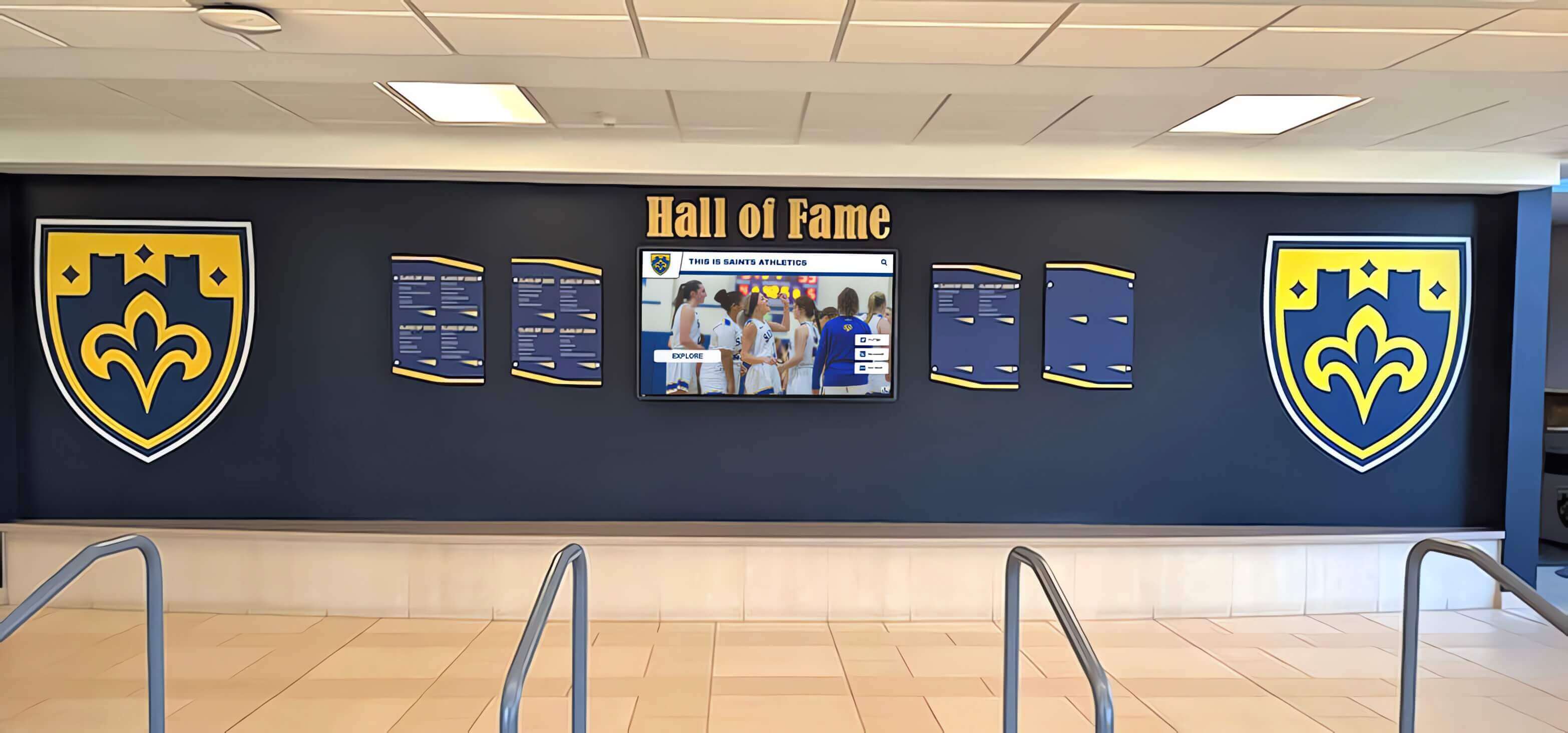
The Rise of Commercial Computing (1950s-1970s)
Postwar decades saw computing transition from specialized research tools to commercial products that businesses adopted for data processing, scientific calculation, and business applications.
Mainframe Era Innovations
Companies like IBM, UNIVAC, Burroughs, and others built increasingly sophisticated mainframe computers that organizations purchased or leased for centralized data processing. Innovators from this era developed crucial technologies including magnetic core memory, disk storage systems, operating systems managing multiple concurrent tasks, high-level programming languages like FORTRAN and COBOL, and database management systems.
Recognition for this era honors both visionary business leaders who built computing industries and technical innovators who solved engineering challenges enabling reliable, practical systems that organizations could depend on for mission-critical applications.
Minicomputer Revolution
The emergence of smaller, more affordable minicomputers from companies like Digital Equipment Corporation, Data General, and others democratized computing access, allowing departments within organizations and smaller companies to deploy their own systems rather than sharing centralized mainframes. This decentralization planted seeds for personal computing by proving that distributed systems could work effectively.
Personal Computing Revolution (1970s-1990s)
The development of affordable personal computers represented a paradigm shift as dramatic as computing’s original emergence—putting computational power directly in individual hands rather than mediating access through centralized systems and professional operators.
Pioneering Personal Computer Development
Innovators at companies like Apple, Commodore, Atari, and countless others demonstrated that regular people could use computers for productive work, education, creativity, and entertainment. This era produced both technological achievements—microprocessors, graphical user interfaces, peripherals—and visionary leadership recognizing that computing could become a consumer product rather than remaining specialized business equipment.
Personal computing recognition celebrates both technical innovations making machines usable and accessible, and the cultural impact of democratizing computational access in ways that transformed how people work, learn, create, and communicate.
Software Industry Emergence
As hardware became commoditized, software emerged as a distinct industry. Companies built operating systems, productivity applications, entertainment software, development tools, and countless other programs that made computers useful for specific purposes. Pioneers who created influential software products or established successful software companies receive recognition for building industries that employed millions while creating tools billions now use daily.
The rise of educational technology and digital solutions during this era also transformed how institutions managed information and served their communities.
Internet and Networking Era (1980s-Present)
Networking technologies transformed isolated computers into interconnected systems enabling communication, collaboration, and information sharing globally.
Network Protocol and Internet Development
Researchers who developed TCP/IP protocols, domain name systems, email standards, web protocols, and other foundational networking technologies created infrastructure enabling the connected world. Many of these innovators worked in academic or government research environments rather than commercial companies, developing open standards that anyone could implement rather than proprietary systems benefiting individual organizations.
Recognition for networking pioneers honors both specific technical contributions and broader commitment to open systems and collaborative development that characterized early internet culture and enabled explosive subsequent growth.
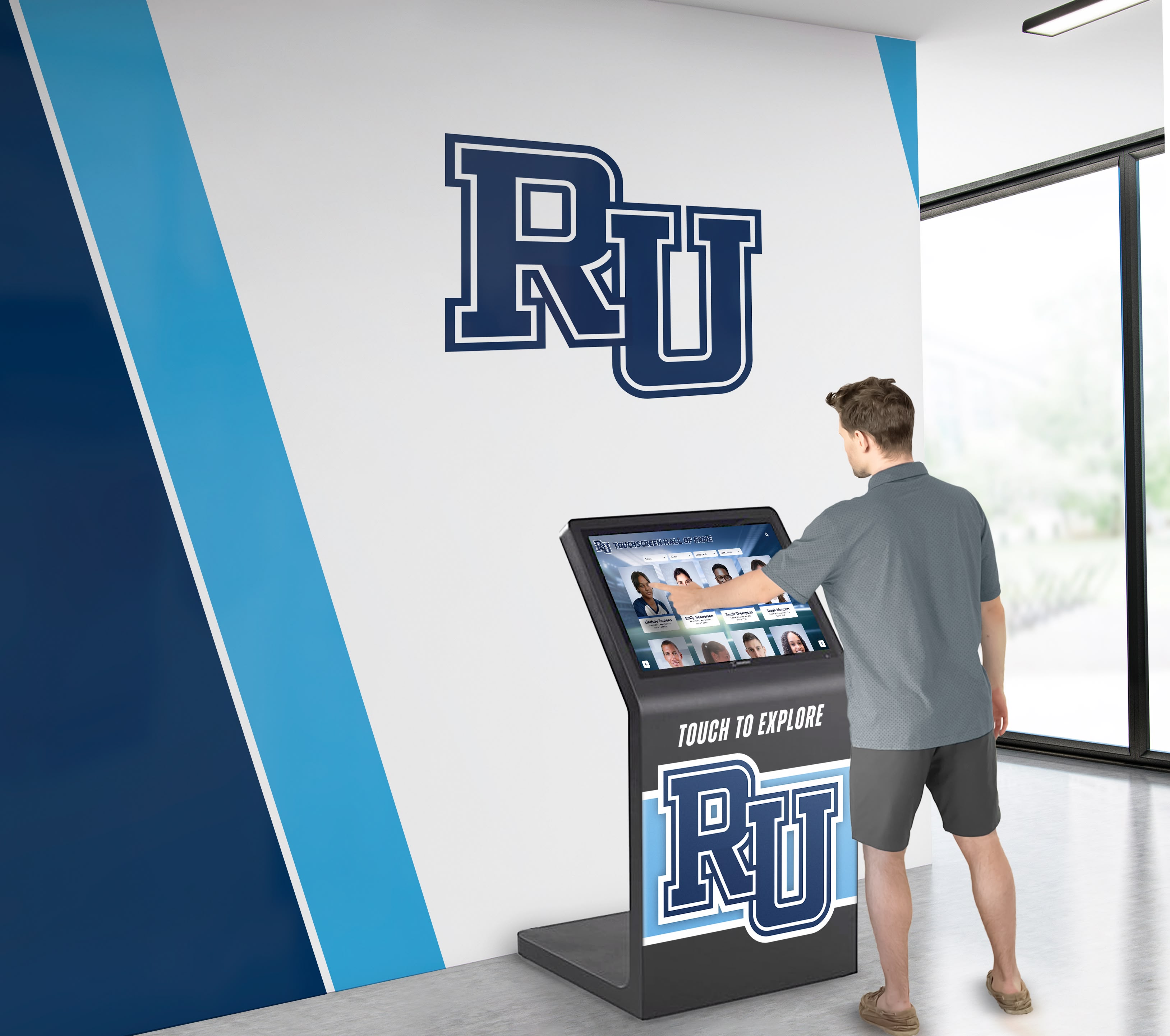
World Wide Web and Modern Internet
The development of the World Wide Web in the early 1990s, followed by search engines, e-commerce platforms, social networks, and mobile internet, created computing’s most visible impact on daily life. Innovators who built these systems and companies—web browsers, search algorithms, online marketplaces, social platforms—receive recognition for creating technologies that fundamentally changed how people access information, conduct business, and maintain relationships.
Contemporary Computing (2000s-Present)
Recent decades produced innovations in artificial intelligence, cloud computing, mobile devices, and countless other domains that continue reshaping technology and society.
Mobile Computing Revolution
Smartphones combining computing, communication, cameras, and internet access in pocket-sized devices represent engineering achievements as significant as original personal computers. Innovators who developed mobile operating systems, applications, cellular technologies, and user interfaces created the most personally intimate computing devices, carried constantly and integrated deeply into daily routines.
Cloud Computing and Distributed Systems
The shift from local computing to cloud-based services required massive engineering efforts building global infrastructure for storing data, running applications, and delivering services reliably at scale. Innovators who architected cloud platforms, developed distributed computing frameworks, or built successful cloud service businesses transformed computing economics and capabilities.
Artificial Intelligence and Machine Learning
Recent breakthroughs in machine learning, particularly deep learning and large language models, represent achievements decades in development that finally demonstrated practical capabilities matching or exceeding human performance for specific tasks. Researchers who advanced AI theoretical foundations, engineers who built systems applying those theories practically, and entrepreneurs who deployed AI commercially all merit recognition for contributions that may prove as historically significant as computing’s original emergence.
Educational institutions increasingly emphasize STEM recognition programs that celebrate students pursuing computer science and technology achievements, encouraging more young people to enter fields critical for continued innovation.
Implementing Computer Halls of Fame in Educational Institutions
Universities, colleges, and secondary schools with strong computer science, information technology, or engineering programs can establish recognition programs celebrating technology achievement while serving strategic institutional objectives.
Defining Recognition Scope and Eligibility
Educational computer halls of fame must determine what achievements warrant recognition and who qualifies for consideration.
Alumni Career Achievement Recognition
Most academic computer halls of fame primarily honor distinguished alumni who achieved exceptional success in technology fields after graduation. Recognition might celebrate careers including research contributions advancing computer science knowledge, entrepreneurial success founding or leading significant technology companies, technical leadership on influential products or systems, industry recognition through awards or professional society honors, and contributions to computing education or professional community service.
Establish clear criteria defining what constitutes exceptional achievement worthy of hall of fame induction versus recognition through other programs. Not every successful graduate merits hall of fame inclusion—standards should identify truly distinguished careers while remaining achievable enough that students see recognition as inspirational rather than impossibly remote.
Faculty Research and Teaching Excellence
Some academic programs also recognize distinguished faculty members whose research, teaching, or service significantly impacted computer science fields or institution reputation. Faculty recognition honors breakthrough research contributions, influential teaching shaping generations of students, development of widely adopted curricula or pedagogical methods, exceptional service to professional computing communities, or sustained excellence across decades-long careers.
Faculty recognition requires careful implementation avoiding perceptions that current employees determine their own recognition. Many programs only consider retired faculty or establish waiting periods ensuring career accomplishment fully evident before recognition.
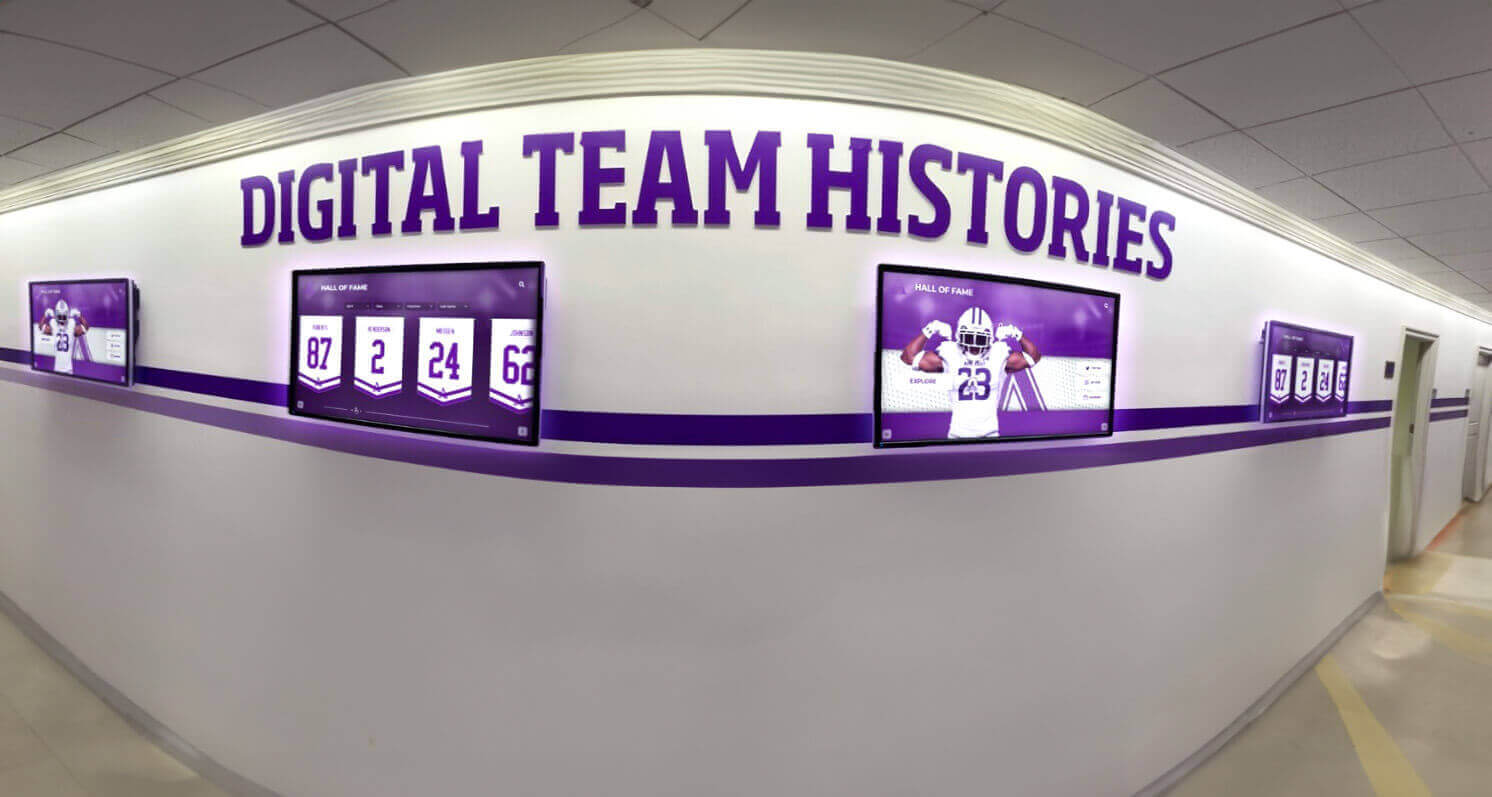
Student Achievement During Enrollment
Some programs incorporate current student recognition celebrating exceptional achievement during academic programs including competitive programming success in events like ACM ICPC, significant research contributions as undergraduates, creation of widely adopted software projects, entrepreneurial achievements launching companies while students, or distinguished graduate research advancing knowledge.
Current student recognition serves motivational purposes showing that excellence receives acknowledgment even before graduation and career success. However, programs must distinguish between preliminary student achievement and career accomplishment warranting permanent hall of fame inclusion.
Selection Processes and Governance
Credible selection processes ensure that computer hall of fame recognition maintains meaning and value over time.
Nomination Procedures
Establish clear nomination processes specifying who may nominate candidates—typically including alumni, faculty, students, industry partners, and sometimes self-nomination. Require comprehensive nomination packages documenting achievements, providing career context, including supporting materials like publications or patents, and explaining why candidates merit recognition.
Set annual nomination deadlines creating regular cycles while providing adequate time for selection committee review. Maintain nomination confidentiality until final selections announced, preventing awkward situations if candidates aren’t selected.
Selection Committee Composition
Form selection committees including diverse representation from computer science faculty providing technical expertise, successful alumni offering industry perspective, advancement staff understanding strategic priorities, and possibly external computing leaders adding prestige. Stagger committee terms ensuring continuity while regularly refreshing perspectives.
Committee size should enable substantive discussion—typically 7-12 members—without becoming unwieldy. Establish clear conflict-of-interest policies addressing situations where committee members know candidates personally or professionally.
Evaluation Criteria and Decision-Making
Develop written evaluation criteria applied consistently across all candidates including measures of achievement significance and impact, innovation and originality of contributions, sustained excellence vs. singular accomplishments, leadership and influence on others, embodiment of institutional values, and contribution back to the institution.
Document how committee weighs different criteria, whether recognition emphasizes particular achievement types, and how decisions occur—consensus, majority vote, or other approaches. Transparent criteria and processes build confidence in selection integrity.
Creating Comprehensive Recognition Content
Computer halls of fame achieve maximum impact through rich content that tells complete achievement stories rather than listing bare credentials.
Biographical Narrative Development
Effective profiles include educational background and path to computing career, description of career trajectory and major positions, detailed explanation of significant technical contributions, impact of work on technology field or society, awards and recognition received, personal reflections on career and institutional influence, advice for current students and emerging professionals, and interesting anecdotes humanizing technical achievements.
Write narratives for general audiences rather than assuming technical knowledge. Explain why achievements mattered and what they enabled, not just technical specifications. Stories about overcoming challenges, fortunate discoveries, or collaborative breakthroughs engage readers more effectively than dry recitations of accomplishments.
Technical Achievement Documentation
While writing for broad audiences, include sufficient technical depth that computer science professionals appreciate achievement significance. This might include descriptions of algorithms, systems, or methodologies developed, technical publications with citation metrics showing influence, patents issued for innovative technologies, products built and their market impact, or contributions to open-source projects with adoption metrics.
Balance accessibility with substance—general readers should understand achievements’ significance while technical readers find substantive documentation of contributions.

Multimedia Content Collection
Digital recognition platforms enable rich multimedia storytelling through professional photographs from various career stages, video interviews discussing achievements and career advice, screenshots or demonstrations of software created, footage of technology in use, scanned historical documents like early code or design sketches, and photo galleries showing career progression.
Many technology pioneers work in visual media-rich environments making comprehensive content collection feasible. Systematic outreach during nomination processes ensures materials gathered while readily available rather than attempting historical reconstruction years later.
Solutions like Rocket Alumni Solutions provide platforms specifically designed for creating engaging recognition displays that combine text, images, video, and interactive elements showcasing achievements comprehensively.
Strategic Benefits of Computer Halls of Fame for Educational Institutions
Beyond honoring achievements, well-implemented computer halls of fame deliver measurable value supporting institutional strategic priorities.
Student Recruitment and Program Promotion
Computer science programs face intense competition for talented students. Recognition programs demonstrating program prestige and distinguished alumni success provide tangible evidence of program quality.
Showcasing Career Possibilities and Program Impact
Prospective students and families evaluating computer science programs want assurance that education will lead to meaningful career opportunities. Halls of fame documenting alumni achievements across diverse technology domains—research, industry, entrepreneurship, education—demonstrate program effectiveness at preparing graduates for success.
Feature recognition displays prominently during campus tours, ensuring prospective students encounter concrete evidence of program excellence. Create online access allowing remote exploration during research phases before campus visits. Integrate hall of fame content into recruitment materials showcasing distinguished alumni.
Demonstrating Industry Connections and Opportunities
Computer halls of fame documenting alumni success at leading technology companies or successful startups signal strong industry connections. These networks often translate into internship opportunities, guest speakers, project collaborations, and eventual employment pathways benefiting current students.
Highlight not just where alumni work but also their willingness to support current students through mentorship, networking, or hiring—creating tangible pathways from classroom to career that recruitment-focused families value highly.
Alumni Engagement and Fundraising Support
Recognition programs create powerful engagement opportunities supporting development objectives.
Recognition-Driven Event Programming
Hall of fame induction ceremonies provide compelling reasons for alumni to return to campus, reconnect with faculty and classmates, and re-engage with institutional community. These events create opportunities for meaningful conversations about program needs, student support, and facility improvements that advancement teams can leverage for fundraising.
Plan induction ceremonies during homecoming, reunions, or other events maximizing attendance and participation. Live-stream ceremonies enabling broader alumni viewing for those unable to attend physically. Create social media activation around inductions generating visibility and conversation.
Many institutions combine digital recognition displays with fundraising initiatives, demonstrating how honoring past achievement supports current students and programs.
Building Lasting Connections Through Meaningful Recognition
Alumni who receive hall of fame recognition typically demonstrate increased engagement and giving. Recognition creates reciprocal relationships—institutions honor past contributions, alumni respond with renewed support. The emotional impact of being inducted often motivates significant financial contributions supporting current students or program initiatives.
Beyond inducted individuals, hall of fame programs create engagement opportunities for entire graduating classes who celebrate classmates’ recognition, department cohorts who share pride in colleague achievements, and industry networks that appreciate institution graduating distinguished professionals.

Current Student Inspiration and Motivation
Visible recognition of distinguished alumni achievements provides powerful motivation for current students pursuing computing careers.
Demonstrating Achievable Excellence
Students benefit from seeing concrete examples of what computer science education enables. Hall of fame profiles showing varied paths—not everyone becomes technology billionaires, many achieve distinction through research, teaching, technical leadership, or building successful medium-sized companies—help students understand multiple excellence pathways.
Feature alumni whose backgrounds resemble current student populations showing that students “like them” achieved recognition. Highlight first-generation college graduates, women and underrepresented minorities in computing, and individuals who overcame challenges—providing inspiration for students who might question whether they belong in computing fields.
Creating Mentorship Connections
Hall of fame programs create natural mentorship opportunities connecting recognized alumni with current students. Many honored alumni willingly engage with students through guest lectures, career panels, project advising, or informal networking—relationships providing invaluable guidance and industry insight.
Formalize mentorship connections by creating programs pairing interested students with willing alumni. Leverage induction ceremonies for meet-and-greet opportunities. Create online directories enabling students to research alumni achievements and reach out to individuals in career areas of interest.
Modern Digital Recognition Platforms for Computer Halls of Fame
Technology fields naturally embrace digital recognition solutions that provide capabilities traditional physical displays cannot match.
Advantages of Digital Systems for Technology Recognition
Digital platforms address practical limitations while adding functionality that enhances recognition impact.
Unlimited Scalability and Comprehensive Coverage
Unlike physical wall space that eventually fills completely, digital systems accommodate unlimited inductees without requiring additional space as programs grow. This unlimited capacity enables truly comprehensive recognition across all deserving individuals rather than painful decisions about whom to exclude due to spatial constraints.
Computer science programs often graduate hundreds of students annually. Over decades, countless alumni achieve recognition-worthy success. Digital systems make honoring everyone feasible whereas physical displays force artificial selection based on space availability rather than achievement merit.
Rich Technical Content and Detailed Documentation
Digital platforms support content depth impossible with physical plaques including detailed achievement descriptions with technical specifications, complete publication lists with citation metrics, comprehensive patent portfolios, code repositories and open-source contribution documentation, video demonstrations of technologies developed, and career timelines showing progression from student to industry leader.
This technical richness proves particularly valuable for computer halls of fame where achievement significance may require substantial explanation that physical plaques cannot accommodate.
Search, Filter, and Discovery Capabilities
Interactive digital displays enable visitors to explore recognition through multiple pathways including searching by name for specific individuals, filtering by graduation year or degree program, browsing by career domain or company, discovering connections between inductees, or exploring thematic collections around particular technologies.
These discovery capabilities create engagement levels dramatically exceeding passive viewing of physical displays. Analytics consistently show visitors spending significantly more time with interactive digital systems compared to traditional recognition walls.

Remote Access and Global Reach
Web-connected digital systems allow anyone, anywhere to explore computer hall of fame content. Alumni living globally can discover classmates, current students can research distinguished graduates in career areas of interest, prospective students can evaluate program prestige, and industry partners can learn about institutional technology expertise.
This extended reach amplifies recognition impact far beyond the limited audience encountering physical displays during campus visits. Modern platforms can provide virtual tour capabilities allowing comprehensive remote exploration.
Easy Updates and Continuous Improvement
Digital content management eliminates the weeks or months required for physical plaque production and installation. Administrators add new inductees through web interfaces with updates appearing instantly. Profiles can be continuously enhanced as new achievements occur, additional materials become available, or inductees provide feedback improving accuracy.
This maintenance simplicity ensures recognition remains current and comprehensive rather than gradually becoming outdated between major renovation projects.
Implementation Considerations for Educational Institutions
Successful digital computer hall of fame implementations require thoughtful planning addressing both technical and organizational considerations.
Hardware Selection and Placement
Choose commercial-grade displays designed for continuous operation rather than consumer televisions lacking durability for institutional use. Screen size should match viewing distances—larger displays for lobby areas where viewers stand further away, moderate sizes for intimate spaces with closer viewing.
Place displays prominently in high-traffic computer science building locations including main lobbies and entrances, hallways connecting classrooms and labs, student commons and study areas, and near administrative offices where visitors wait. Strategic placement ensures maximum visibility among target audiences.
Many institutions implement multiple display locations throughout computer science facilities creating pervasive recognition presence rather than single isolated installation.
Software Platform Selection
Choose platforms specifically designed for recognition rather than generic digital signage systems lacking features important for hall of fame purposes. Purpose-built solutions provide templates optimized for biographical content, intuitive content management requiring minimal technical expertise, search and filtering capabilities, reliable cloud hosting, and ongoing technical support.
Evaluate platforms based on content flexibility supporting rich technical documentation, ease of use for non-technical administrators, mobile and web access for remote viewing, analytics tracking engagement and usage, and vendor stability and long-term support.
Content Development Strategies
Establish systematic processes for gathering information and creating content including detailed questionnaires to living inductees, research through institutional archives, outreach to colleagues and collaborators, professional writing services if internal capacity limited, and quality assurance reviewing accuracy and completeness.
Many institutions create content in phases—launching with basic profiles then continuously enhancing detail as additional materials become available. This phased approach enables reasonable launch timelines while establishing expectation for ongoing improvement.

Integration with Broader Technology Programs
Connect hall of fame recognition to comprehensive institutional technology recognition including student achievement programs celebrating current student success, faculty research highlights showcasing ongoing work, industry partnership displays documenting collaborations, and historical timelines showing program evolution.
This comprehensive recognition approach positions the hall of fame as the pinnacle of multi-tiered recognition celebrating technology achievement across all levels rather than isolated program disconnected from broader institutional culture.
Beyond Computer Science: Recognizing Technology Achievement Broadly
While computer science provides the core focus, many institutions expand recognition to related technology domains reflecting contemporary interdisciplinary computing reality.
Interdisciplinary Technology Recognition
Modern computing intersects with virtually every field, enabling recognition that spans traditional academic boundaries.
Computational Science and Engineering
Recognize achievements applying computing to advance other scientific domains including bioinformatics and computational biology, computational physics and chemistry, climate modeling and environmental science, astronomical data analysis, and materials science simulation.
These interdisciplinary pioneers often work at computing boundaries developing new applications or requiring computational capabilities driving innovation in both computer science and application domains.
Information Technology and Systems
Honor professionals who built and managed computing infrastructure enabling organizations to operate effectively including cybersecurity experts protecting digital systems, network architects designing reliable communication infrastructure, database administrators managing organizational information, IT leaders aligning technology with business objectives, and systems engineers ensuring reliable operation at scale.
While these professionals may not publish research or invent new algorithms, their practical expertise enables computing’s real-world value delivery.
Digital Arts, Media, and Game Development
Computing enables new creative expression forms deserving recognition including computer graphics and animation innovation, video game development and interactive entertainment, digital music production and sound design, virtual and augmented reality experience creation, and computational photography and image processing.
These creative technologists combine artistic vision with technical implementation skills, demonstrating computing’s role beyond purely utilitarian applications.
Recognizing Teaching and Service Excellence
Computer halls of fame focusing exclusively on research or commercial success risk undervaluing crucial contributions to computing education and community that don’t produce publications or financial returns but remain essential for field advancement.
Computing Education Pioneers
Honor educators who made exceptional contributions teaching computer science including development of influential curricula or pedagogical approaches, authorship of widely adopted textbooks or learning resources, creation of educational tools or platforms used broadly, exceptional teaching touching thousands of students, or service building computing education communities.
These education-focused inductees model career paths different from research or industry while remaining essential for developing future computing professionals.
Professional Community Service
Recognize individuals who contributed significantly to computing professional communities through leadership in professional societies, organization of influential conferences or journals, mentorship of emerging professionals, diversity and inclusion initiatives, or standards development and adoption.
Community service recognition honors that computing advancement requires collective effort, not just individual achievement, and that those who build and maintain professional infrastructure deserve acknowledgment alongside those who develop specific technologies.
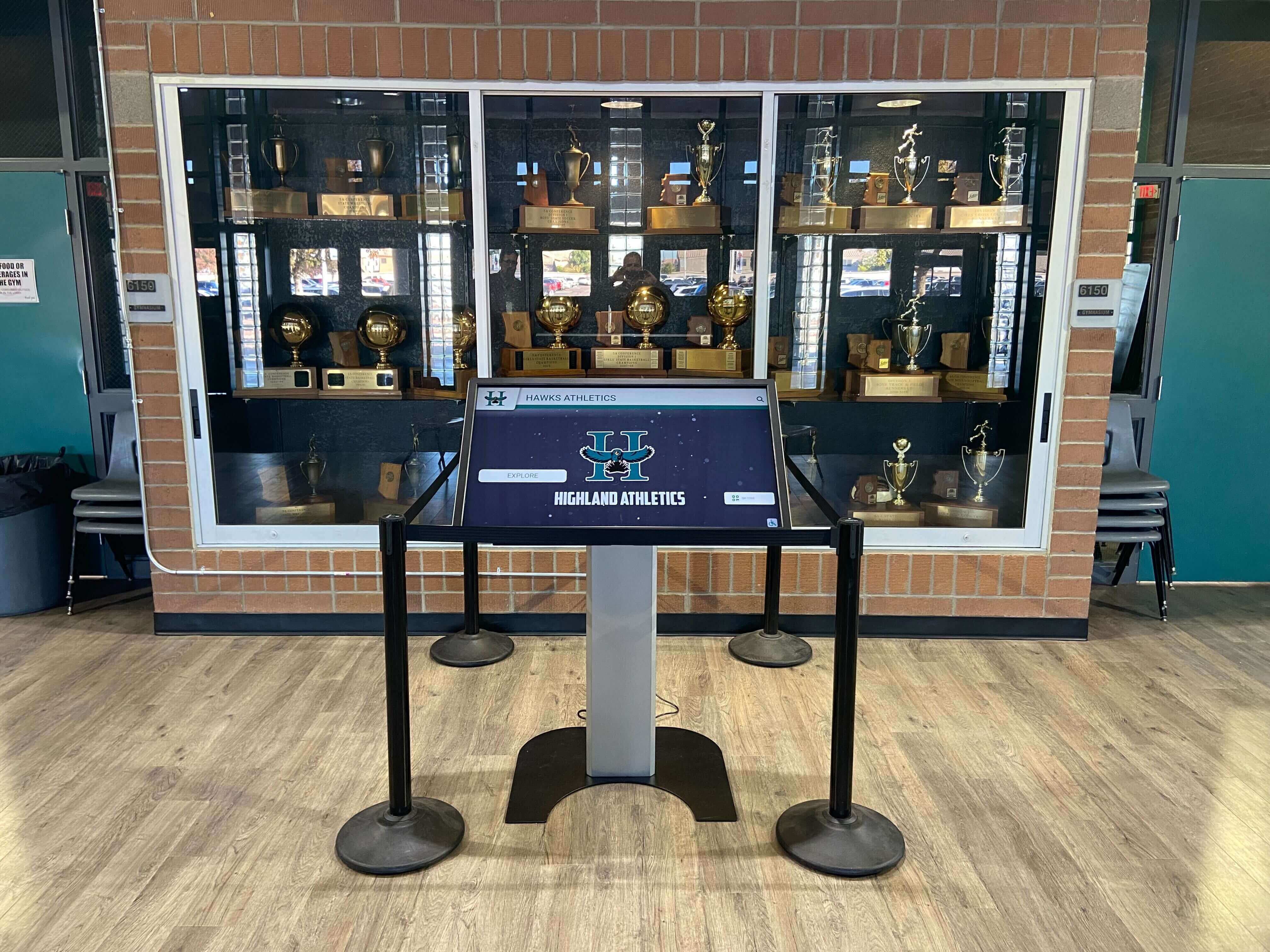
Conclusion: Honoring Technology’s Past, Inspiring Computing’s Future
Computer halls of fame serve the vital purpose of preserving computing history while inspiring continued innovation and excellence. In a field where rapid advancement constantly pushes yesterday’s breakthroughs into obscurity, systematic recognition ensures that foundational contributions receive appropriate acknowledgment and that pioneers who imagined, created, and refined the technologies transforming modern life remain known to future generations building upon their work.
For educational institutions, computer halls of fame deliver strategic value extending far beyond simple historical preservation. They provide powerful recruitment tools demonstrating program excellence through distinguished alumni success. They create engagement opportunities strengthening alumni relationships and supporting fundraising initiatives. They inspire current students by showing achievable paths from classroom learning to professional distinction. And they build institutional identity around technology excellence and innovation that distinguishes programs in increasingly competitive educational markets.
The evolution from traditional physical plaques to comprehensive digital recognition platforms dramatically expands what’s possible in computer hall of fame programs. Modern systems enable unlimited recognition capacity honoring everyone deserving rather than forcing artificial selection due to spatial constraints, rich multimedia storytelling bringing achievements to life through video, images, and comprehensive documentation, interactive exploration letting visitors discover connections and browse content according to their interests, remote access extending recognition reach globally, and continuous enhancement keeping content current and comprehensive.
Whether implementing new computer hall of fame programs or modernizing existing recognition, institutions benefit from purpose-built platforms designed specifically for achievement celebration rather than adapting generic digital signage systems lacking recognition-specific features. Solutions like Rocket Alumni Solutions provide comprehensive platforms combining proven technology, professional support, and best practices from hundreds of educational recognition implementations.
The individuals who created computing—from theoretical pioneers who imagined programmable machines through contemporary innovators advancing artificial intelligence—deserve recognition matching the significance of their contributions to modern civilization. Computer halls of fame, designed thoughtfully and implemented professionally, provide that recognition while serving the broader purpose of inspiring future generations to pursue the technology innovations that will define coming decades as profoundly as previous innovations transformed the past century.
Ready to create a computer hall of fame that honors your institution’s technology pioneers while inspiring future innovation? Modern digital recognition platforms make it practical to implement comprehensive programs celebrating computing achievement effectively while remaining sustainable across decades of program growth and evolution.




































